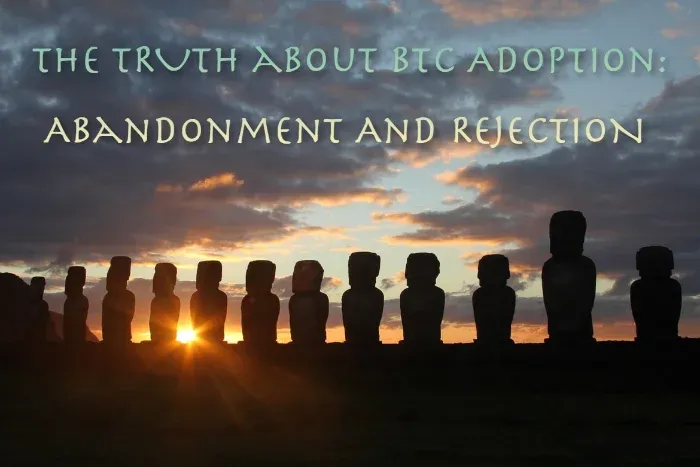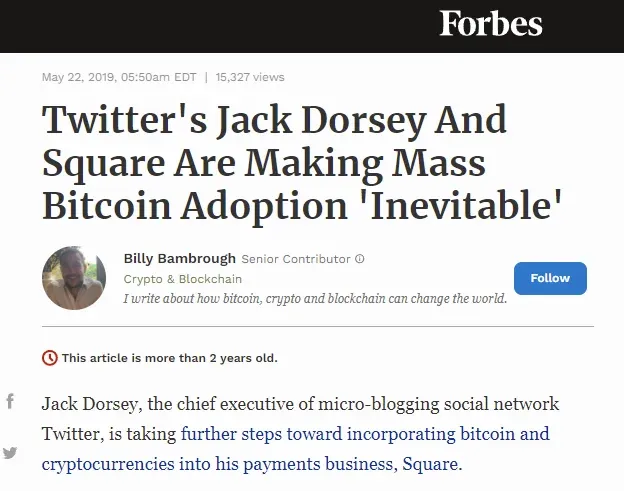The BTC community is currently discussing adoption for BTC as a payment method with the use of the Lightning Network, although, it forgets to consider the failure of scaling the BTC blockchain.

Source
Maybe in time, there will be a similar approach for the Liquid Network (recently down for 22 hours) which is another sidechain developed by Blockstream.
What we understand so far is that both these networks (BTC sidechains) increase centralization and government interference. Censorship will certainly apply in the Lightning Network, as financial hubs become dominant at times of high fees and congestion of the main chain.
Censorship was always a feature in LN since its structure favors the creation of intermediary hubs operated by financial entities under government's regulations and supervision.
KYC is already mandatory when using LN for users of Strike and Chivo Wallets.

Source
Although, it is more probable that there won't be any mass adoption for LN since the population is already rejecting it as a means of payments and transactions.
A look into BTC adoption levels in the past 3 years

Source
In El Salvador, about 5 million of the population interacted with the Chivo/Strike wallet and withdrawn ~$30 in fiat. An airdrop added an artificial 5 million users of the Lightning Network, that will probably never use it again.
With the use of the Strike wallet, Twitter will supposedly use the Lightning Network for tips. I’m not sure if this is going to help Twitter, or the Lightning Network either.
It is interesting, though, that both LN cases use the same centralized financial entity called Strike.
There are LN wallets offering better privacy and control of the funds (with the option to open/close channels), but were not even considered by Twitter. Twitter only when Strike appeared found it to be a great idea that it can implement on its platform.
This is the daily chart of BTC transactions in the last 3-years.

Source
We observe a bearish chart and only points to the fact that everyone is abandoning the use of BTC.
This is not bullish for adoption terms. The network effect is getting reduced, and even fewer transactions are taking place. A negative long-term indicator that is a cause for concern. Especially to all those newcomer billionaires speculatively entering BTC and spamming news outlets about its potential.
What we watch is a decline in the use of BTC. A very different picture from this 2019 statement at Forbes:

Source
Square wasn't even allowing withdrawals of BTC until lately. It is just a trading platform that increased speculation, but not adoption.
There is an explanation for this chart. BTC since 2014 is pure speculation. Nobody cares to use it or using it for payments.
99.99% of new investors have not even moved their BTC from an exchange to a wallet. This because:
- Most bought BTC through custodial services that don’t offer withdrawals (Robinhood, Revolut, Grayscale, PayPal, Square, and more).
- The rest bought BTC through crypto exchanges (Coinbase, Binance, Kraken, etc.) but never cared about cryptocurrencies.
- Everyone bought thinking it will go to 100k and sell there or higher.
- It is all about speculation since there is no utility with BTC.
Even these transactions in the chart above are speculative. Part of these transactions are arbitrage trading, BTC moving between exchanges, something that is mostly automated.
Currently, BTC fees stand at $2, and no user is actually using the network. These are exchanges transferring BTC between wallets, and serving the 0.1% of investors that withdraw to a non-custodial wallet.
Adoption is for speculation reasons and nothing else. This is pretty clear since all the BTC community discusses is the price of the coin while funding and lobbying politicians and celebrities to enter the obscure cause of promoting BTC.
Most politicians are attention “seekers“ anyway. They would gladly promote BTC or even a clear Ponzi if this would help them secure enough voters for re-election.
Strike Wallet drawbacks:
- KYC compliant
- Centralized, run under the control of a certain party
- Censorable transactions and funds that can be seized and frozen
Maybe Twitter could have added PayPal for tips instead since this is nothing different. Strike wallet is removing all the advantages of cryptocurrency and turning it into a typical centralized financial entity with required authorization from its centralized hub.
Blockchain is a revolutionary, immutable database disrupting the finance industry with a potential to provide payments in a secure environment, unhindered by intermediaries.
Source: ResearchGate
Lightning Network
A payment channel is required for two entities to conduct payment transfers, the creation of which incurs high fee.
However, Lightning Network also facilitates payment transfers through an intermediary in the network, who has payment channels with the two entities. This feature is extended by incorporating multiple intermediaries in the network to conduct a payment transfer from one entity to another leading to a web of payment channels. The intermediary charges a very low fee for providing the payment channel (Table 1).
Source: ResearchGate
Low LN fees require centralized financial hubs. The Lightning Network is based on intermediaries to work.
As we see in the example of Strike, which currently is at a lead position compared to the competition, it is a government-regulated wallet, centralized and in control of the funds.
The Lightning Network, as a second layer, carries all the weaknesses of the BTC network and, to achieve scaling, it requires centralized financial entities operating the transactions. These entities, as we see, are regulated financial institutions eliminating financial freedom.
Privacy - KYC compliance

Source
Part of the internet population doesn’t value privacy, and will gladly hand over any private documents asked by any online website.
On most occasions, these documents will be leaked and directly sold in black markets. This is the eventual outcome of any KYC performed. Either it is a regulated organization asked for the papers or any private website. Most KYC leaks happen in databases that are supposed to be secure.
If you want to be safe, always deny KYC. Even when your government asks, it is always better to avoid sending private documents online or using any of their so-called digital governance services. They are all crap, build with the lowest security standards, and can barely keep running during times of mild congestion.
As with any other website, state-run online services are subject to hacks.
In Conclusion
LN adoption is artificial and, with the forced approach of the authoritarian Bukele government, the people reject it.
BTC, instead of adoption it experiences abandonment. As a use case, there are very vague arguments that follow narratives created by marketing networks.
BTC is a mere shadow of the initial Bitcoin vision. Other blockchains are experiencing a vast increase in user-base, utility, and organic adoption today. BTC is just having more speculators, trading volumes, and Robinhood investor that doesn't account as adoption.

Originally published at read.cash
Writing on the following networks:
Noise Cash - Read Cash - Hive - Medium - Vocal - Minds - Steemit - Den.Social - Publish0x
Follow me on social media:

Don't forget to Subscribe/follow if you enjoyed the content!

